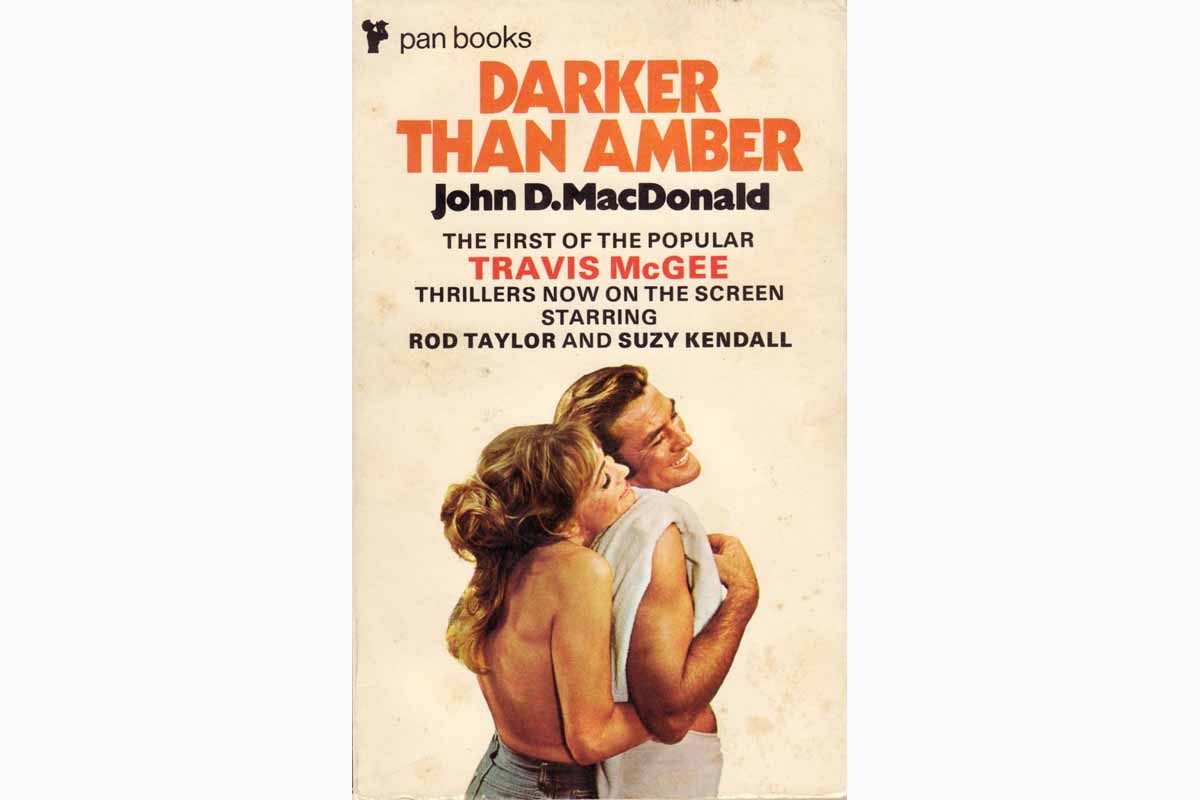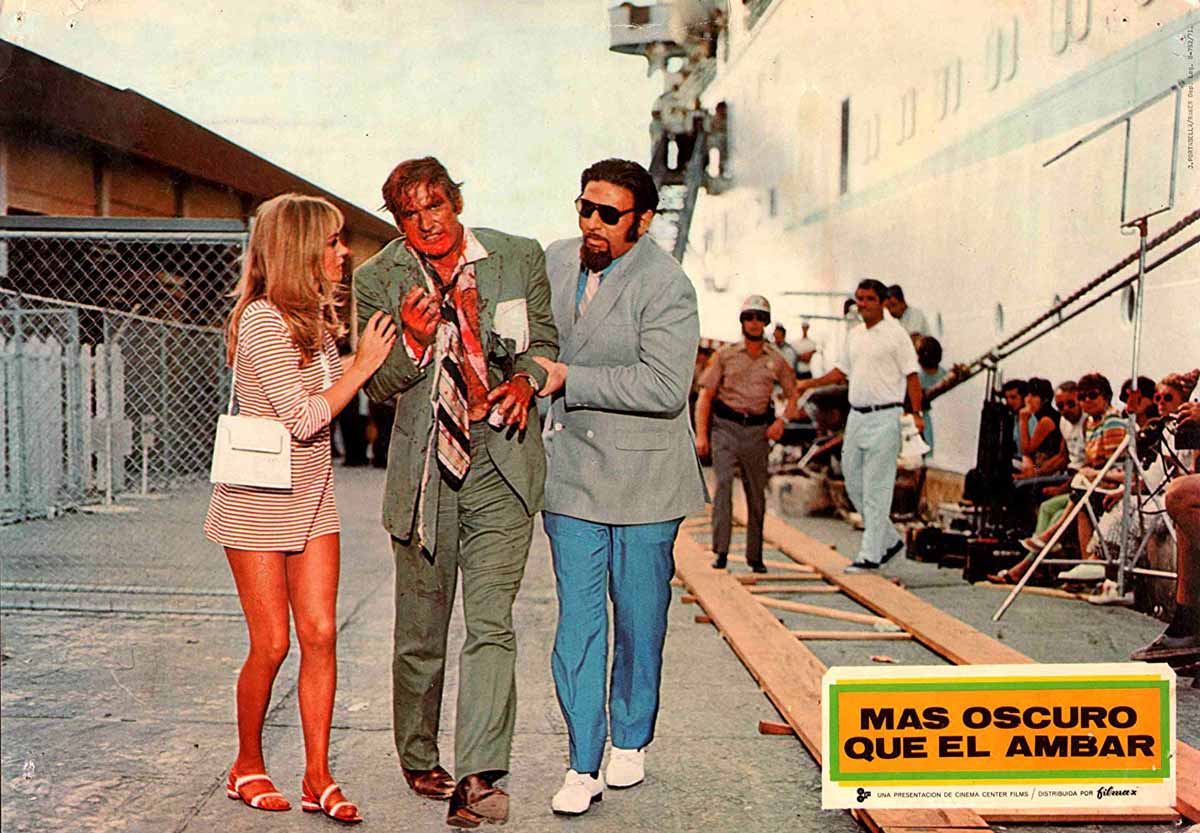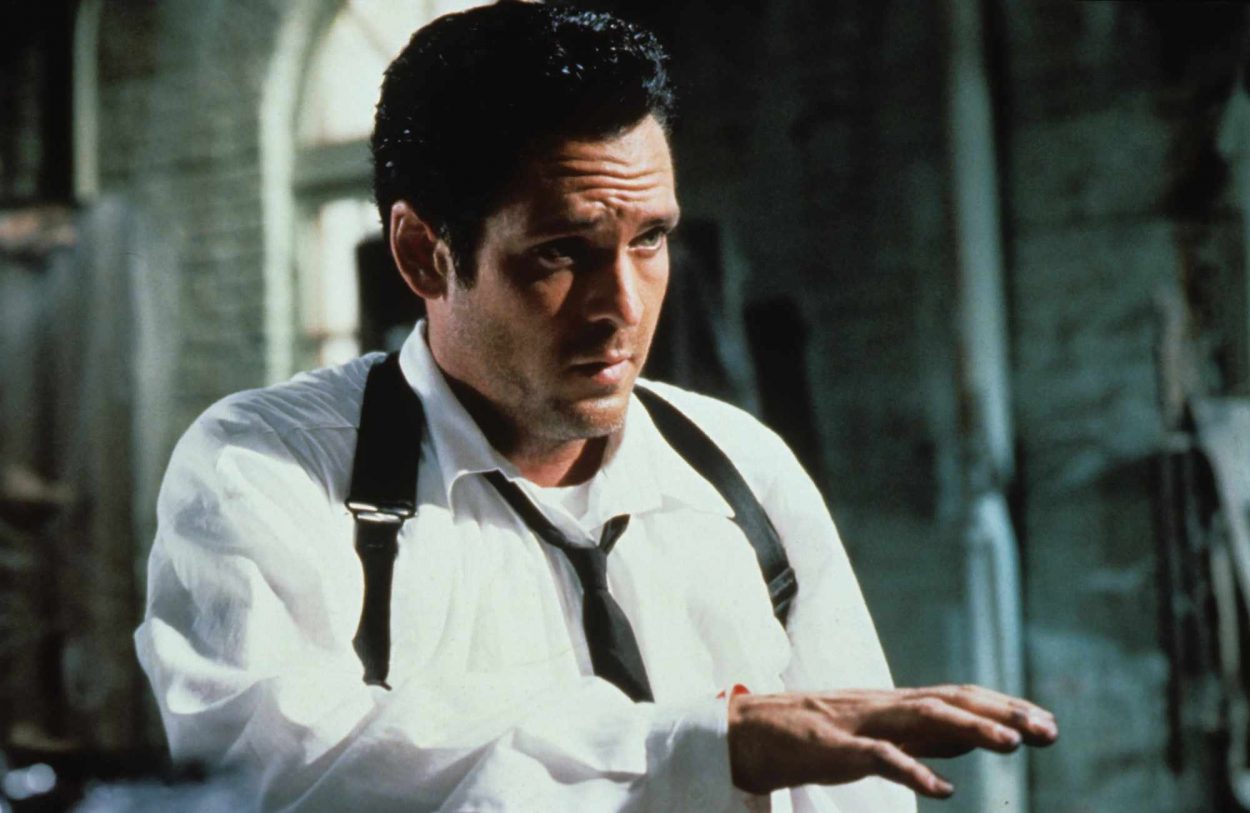The late Robert Clouse will always first be remembered for directing Bruce Lee to world stardom in Enter the Dragon, and perhaps second for several other projects involving top martial artists as Jackie Chan, Bolo Yeung, and Cynthia Rothrock. But Clouse was also adept at creating romances, mysteries, fantasies, and horror stories, and this month the Bev will be presenting some of these lesser-screened works. On Monday, February 17th, we’re offering a scary siege thriller and a not-on-DVD adaptation of one of the ‘70s favorite literary citizen sleuths, for a night that will take you, well, Clouse to the Edge!
1977’s The Pack dramatizes the worst-case scenario when man abandons his best friend. Marine biologist Jerry (Joe Don Baker) has brought his family to vacation village Seal Island, where many summer inhabitants have had a pattern of leaving their dogs behind when their holiday ends. These forsaken pets have now banded together to take down whatever meaty meal they can find, be it a random horse, rabbit… or human. And during a stretch of bad weather, Jerry’s family and an ever-dwindling number of island residents find themselves under siege from the rabid canines. Whose base instincts will better insure their group’s survival?
In the early ‘70s, along with directing, Robert Clouse was establishing a reputation for scripting horror films for other filmmakers, writing Something Evil, which would be directed for CBS television by Steven Spielberg in 1972, and Happy Mother’s Day… Love George, directed in 1973 by actor Darren McGavin with Patricia Neal, Bobby Darin, and Ron Howard. The Pack was adapted from a 1976 novel by multi-disciplined writer David Fisher, which WB optioned in outline form before the book was completed. While Seal Island is a real destination in Southwest Nova Scotia, Canada, press coverage stated that the film was shot in Bodega Bay, California. 35 dogs were used to portray the 15 former pets in the story, each dog effectively having a double, and all were strategically fed so that while their treatment met with American Humane Association approval, they would have the appearance of living a feral life. And interestingly, while most films appeal to the MPAA to have ratings changed to allow broader attendance, The Pack was initially rated PG and then raised to an R before its release.
When Sam Peckinpah chose the title Straw Dogs for his 1971 film adaptation of the book The Siege of Trencher’s Farm, he was motivated by the notion of how, as described in the Chinese Tao Te Ching, people were compared to how in ceremonies, straw dogs would be created to be decorated and praised, then “discarded with indifference.” Seeing as The Pack tells a story of real dogs discarded with indifference, it’s serendipitous that, while star Joe Don Baker did not appear in Straw Dogs, he did work with Peckinpah, as the younger more successful brother of Steve McQueen’s title character Junior Bonner. To continue the Peckinpah connection, co-star R.G. Armstrong appeared in Ride the High Country, Major Dundee, The Ballad of Cable Hogue, and Pat Garrett and Billy the Kid.
Easygoing Florida “salvage consultant” Travis McGee (Rod Taylor) goes fishing with his scholarly friend Meyer (Theodore Bikel) when they inadvertently catch a woman, a would-be murder victim thrown from a bridge named Vangie (Suzy Kendall). After gaining her trust, she confides to him that she’s been the honey trap for a violent thief and killer named Terry (William Smith). Infatuated with Vangie, and being subject first-hand to Terry’s ruthless retatliation, McGee employs a combination of cunning and brute strength to end these lonely-hearts murders, even when the circumstances turn Darker than Amber, from 1970.

Writer John D. MacDonald created the opportunistic Travis McGee in the 1964 novel The Deep Blue Good-by, published seven years after the release of his wildly successful book The Executioners, which was the source novel for both the 1962 and 1991 films Cape Fear. Darker than Amber, first published in 1966, was the seventh novel in this series. McGee would be the subject of 21 novels, all involving some sort of color treatment in the title; one of them, 1979’s The Green Ripper, had its title inspired from when MacDonald’s son had overheard a reference to the Grim Reaper at a dinner party and mistranslated the term. Throughout his life, MacDonald was fiercely protective of the character: he previously turned down an offer to create a TV series about McGee, which his friend “Laugh-In” star Dan Rowan hoped to star in, and after the film adaptation of Darker than Amber, only one other McGee book, The Empty Copper Sea, would be adapted to film, as a 1983 back-door TV movie pilot for a series starring Sam Elliott as McGee, which did not materialize. Recently, The Deep Blue Good-by has been in and out of development for a new film, with initially Leonardo DiCaprio then Christian Bale set to star, and a revolving door of directors attached, but as yet remains in limbo. MacDonald had mixed feelings about Amber as a film as it was being shot; in a 1989 reminiscence about an on-set visit by his friend and collaborator Pete Schmidt, the author liked Taylor as McGee, saying, “[Rod had] a face that looked lived in…the gentleness that appeals to women and the manliness that appeals to men,” but he did not care for producer Jack Reeves or the changes made to the story by veteran TV writer Ed Waters, remarking, “It’s hard to believe that I sat for two hours watching them shoot a 60 second scene that took Jane Russell nine tries to correctly emote lines I never wrote in the first place!”

In his 1971 review of Amber, Roger Ebert wrote, “As [McGee], Taylor is vulnerable and funny…He inhabits the role easily; if you’re a John D. MacDonald fan, you won’t question the casting. The movie is also at ease with itself…[it] has confidence in its MacDonald plot and moves at just the right distance between action and characterization…the Florida of Travis McGee is fully seen by director Robert Clouse…his fist-fights are beautifully choreographed.” The pivotal fight scene between Rod Taylor and William Smith reportedly got real, with Taylor breaking Smith’s ribs while Smith broke Taylor’s nose. Director Steven Soderbergh cited this sequence as a major influence on his fight choreography for his 2011 espionage thriller Haywire with Gina Carano. When the initially R-rated film was reissued with a PG, much of this lauded fight sequence was diluted in order to get the family-friendly rating, but an original uncut print with the blows intact will be presented at our screening.
So, if you’re dog-tired of conventional movies, and you want it darker, then spend an evening getting some raw animal action – figurative and literal – courtesy of director Robert Clouse and the New Bev!


